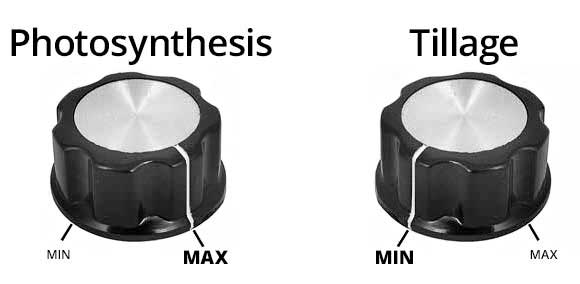|
Click to listen to this article
|
By Andrew McGuire
Soil health management can be distilled to two principles:
- Maximize photosynthesis
- Minimize tillage
These are principles; they do not tell you what practices you should use, but rather what the practices you choose to implement should provide.
Maximizing photosynthesis is all about interception of sunlight to power plant growth.
Fill the space you have with plant growth. Aim for a full-time, full canopy as much as possible.
Fill the time you have with plant growth, year-round plant growth, although I doubt we could tell if you missed a couple weeks over the course of a year.
Filling time and space will require a soil with sufficient nutrients, optimum pH, and structure conducive to seedling emergence and to root growth, which brings us to the second principle.
Minimizing tillage is all about maintaining soil structure and keeping the soil protected from erosion. Tillage damages soil structure and reduces protective residue cover.
When both principles are followed, you get the five soil health principles and practices from NRCS, regenerative agriculture, and others:
- Keep soil covered as much as possible. This is achieved by combining the Max and min principles.
- Minimize soil disturbance. Tillage is the primary culprit in disturbing the soil, hence the min principle.
- Keep plants growing year-round. This is one way to accomplish the Max principle.
- Use cover crops and crop rotation. These practices also accomplish the Max principle.
- Integrate livestock grazing. This practice allows more flexibility in applying the Max and min principles, allows the use of perennials, and reduces tillage.

